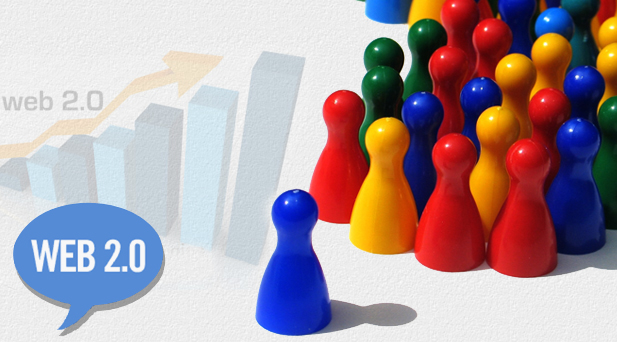Web 2.0 Design
Web 2.0

Darcy DiNicco, a consultant on electronic information design coined the term ‘Web 2.0’ in her article ‘Fragmented Future’.
In a brainstorming session, the following were key features and differences were identified amongst others
|
Web 1.0 |
Web 2.0 | |
|
DoubleClick |
–> | Google AdSense |
|
Ofoto |
–> | Flickr |
|
Akamai |
–> | BitTorrent |
|
mp3.com |
–> | Napster |
|
Britannica Online |
–> | Wikipedia |
|
Personal websites |
–> | Blogging |
|
Evite |
–> | Upcoming.org and EVDB |
|
Domain name speculation |
–> | Search engine optimization |
|
Page views |
–> | Cost per click |
|
Screen scraping |
–> | Web services |
|
Publishing |
–> | Participation |
|
Content management Systems |
–> | Wikis |
|
Directories (taxonomy) |
–> | Tagging (“folksonomy”) |
|
Stickiness |
–> | Syndication |
Websites based on Web 2.0 allow users to do more than just retrieve information. The client-side/web browser technologies typically used in Web 2.0 development are Asynchronous JavaScript and XML (Ajax), Adobe Flash and the Adobe Flex framework, and JavaScript/Ajax frameworks such as Yahoo! UI Library, Dojo Toolkit, MooTools, and jQuery.
SLATES, as used by Andrew McAfee are some key features and techniques used in development of websites based on Web 2.0 –
1. Search – finding information through keyword search
2. Links – connects information and provides low-barrier social tools
3. Authoring – ability to create, modify, update and delete content
4. Tags – facilitates searching without dependence on pre-defined categories
5. Extensions – makes Web an application platform and a document server
6. Signals – Use of Live Feeds for content change notifications
For more details on products, services and prices, please contact – Dream Dezigns